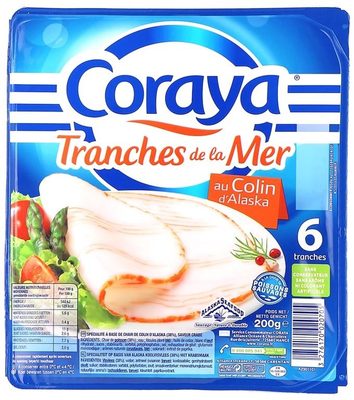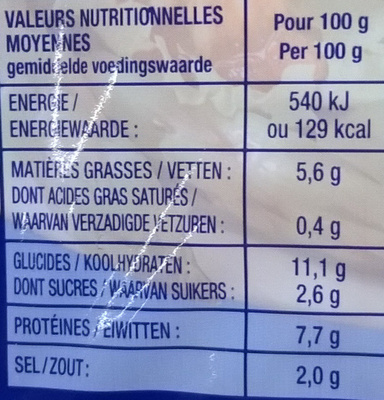Jambon de la mer au colin d'Alaska - Coraya - 200 g (6 tranches)
This product page is not complete. You can help to complete it by editing it and adding more data from the photos we have, or by taking more photos using the app for Android or iPhone/iPad. Thank you!
×
Barcode: 3276170900014 (EAN / EAN-13)
Common name: Spécialité à base de chair de colin d'Alaska, saveur crabe
Quantity: 200 g (6 tranches)
Packaging: Plastic, Fresh, Tray, fr:Film plastique
Brands: Coraya
Categories: Seafood, Fishes and their products, Fishes, Fresh foods, Lean fishes, Fish preparations, Pollocks, Surimi, Preparations-made-from-fish-meat
Labels, certifications, awards:
No artificial flavors, No preservatives, No artificial colors, No colorings, PDO
Manufacturing or processing places: France
Traceability code: EMB 50099C - Carentan (Manche, France), FR 50.099.003 CE - Carentan (Manche, France)
Link to the product page on the official site of the producer: http://www.coraya.fr
Matching with your preferences
Environment
Carbon footprint
Packaging
Transportation
Report a problem
Data sources
Product added on by big-brother
Last edit of product page on by roboto-app.
Product page also edited by date-limite-app, desan, gildubs, jacob80, julien-dijoux, openfoodfacts-contributors, packbot, tacite-mass-editor.











